
Kościuszko was a passenger steamship that was built in Scotland in 1915, sailed as a troopship in both World Wars, was an ocean liner between the wars, carried displaced persons after World War II and was scrapped in England in 1950.

SS Potsdam was a steam ocean liner that was launched in Germany in 1899 for Holland America Line. In 1915 Swedish American Line acquired her and renamed her Stockholm.

SS Noordam was a steam ocean liner that was launched in Ireland in 1901 and scrapped in the Netherlands in 1928–29. Holland America Line owned her throughout her career. From 1923 to 1924 Swedish American Line chartered her and renamed her Kungsholm.
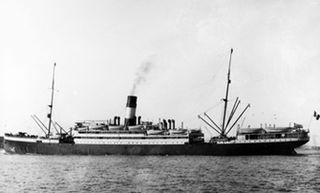
SS Taormina was a transatlantic ocean liner that was launched in Scotland in 1907 for an Italian shipping line. She was owned successively by Italia Società di Navigazione a Vapore, Lloyd Italiano and Navigazione Generale Italiana (NGI). Taormina was briefly chartered as a troop ship for the US Armed Forces in 1918. She was scrapped in 1929.
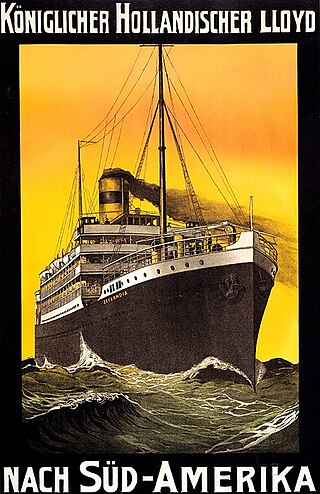
USS Zeelandia was an ocean liner that was built in Scotland in 1910 and scrapped in the Netherlands in 1936. She was the largest ship in the Koninklijke Hollandsche Lloyd (KHL) fleet from 1910 until the liners Gelria and Tubantia were completed in 1913 and 1914. She was USS Zeelandia from April 1918 until October 1919, when she was a United States Navy troopship.

RMS Atrato was a UK steamship that was built in 1888 as a Royal Mail Ship and ocean liner for the Royal Mail Steam Packet Company. In 1912 she was sold and became the cruise ship The Viking. Late in 1914 she was requisitioned and converted into the armed merchant cruiser HMS Viknor. She sank in 1915 with all hands, a total of 295 Royal Navy officers and men.
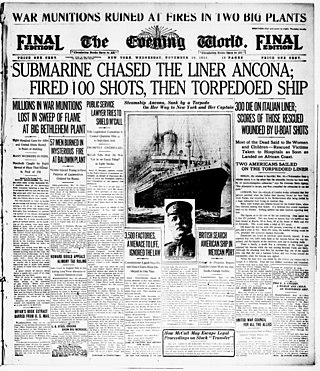
SS Ancona was an ocean liner, built in 1908 by Workman, Clark and Company of Belfast for the Societa di Navigazione a Vapore Italia of Genoa. She was an emigrant ship on a route between Italy and the United States. SM U-38 sank her on 8 November 1915 off the coast of Tunisia.
RMS Magdalena was a British steamship that was built in 1889 as a Royal Mail Ship and ocean liner for the Royal Mail Steam Packet Company. In the First World War she served as the troop ship HMT Magdalena. After a long and successful civilian and military career she was scrapped in 1923.
Ramón Alonso R. was a merchant steamship that was built in Scotland in 1898 and scrapped in Spain in 1959. Her original name was Montclair. She was renamed José Gallart in 1901, Balmes in 1911 and Ramón Alonso R. in 1929. Her first owner was the British Elder Dempster Lines, but she spent most of her career with a succession of Spanish owners. She was built as a transatlantic ocean liner with some cargo capacity, but in 1927 she was refitted as a cargo ship. In 1913, when she was called Balmes, the ship survived a serious cargo fire in mid-Atlantic.
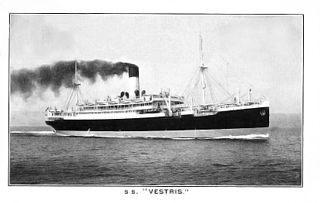
SS Vestris was a 1912 steam ocean liner operated by Lamport and Holt Line and used on its service between New York and the River Plate. On 12 November 1928 she began listing about 200 miles (300 km) off Hampton Roads, Virginia, was abandoned, and sank, killing more than 100 people. Her wreck is thought to lie some 1.2 miles (2 km) beneath the North Atlantic.
SS Verona was a transatlantic ocean liner that was built in Ireland in 1908 for an Italian shipping line. She was a troop ship in the Italo-Turkish War of 1911–12 and in the First World War in 1917–18. In 1918 a German submarine sank her in the Mediterranean with great loss of life.
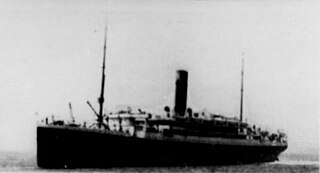
RMS Amazon was a transatlantic Royal Mail Ship that the Royal Mail Steam Packet Company operated on scheduled services between Southampton and South American ports including Buenos Aires. She was the second of the RMSP's fleet of "A" series liners, and was launched in 1906.

Lamport and Holt was a UK merchant shipping line. It was founded as a partnership in 1845, reconstituted as a limited company in 1911 and ceased trading in 1991.

SS Vauban was a 1912 steam ocean liner operated by Lamport and Holt Line and used on its service between New York and the River Plate. She was named after the French military engineer Sébastien Le Prestre de Vauban (1633–1707). She was a troop ship in the First World War, resumed passenger service until 1930 and was scrapped in 1932.
SS Sagamore was a transatlantic cargo liner that was built in Ireland in 1892 for George Warren's White Diamond Steam Ship Company. In 1913 she was modified to carry passengers as well as cargo. In 1917 a German U-boat sank her, causing the death of 52 members of her crew.

Vasari was a 1908 steam ocean liner that was built in England, operated by the British Lamport and Holt Line and used on its service between New York and the River Plate.

RMS Orama was a British steam ocean liner and Royal Mail Ship. She was launched in 1911 for the Orient Steam Navigation Company. When new, she was the largest liner sailing between Great Britain and Australia.
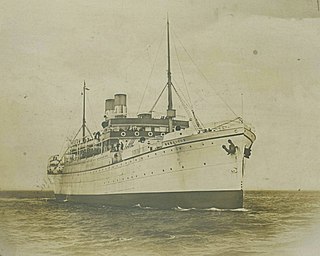
SS Themistocles was a Greek passenger steamship that was built in England in 1907 as Moraitis, renamed Themistocles in 1908, and scrapped in Italy in 1933. She was built to be a transatlantic ocean liner, but she served also as a troop ship.
SS Potaro was a refrigerated cargo steamship that was built in Belfast in 1904, and captured and scuttled in the First World War in 1915.
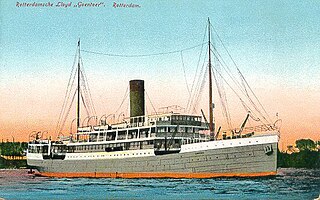
SS Goentoer was a Dutch passenger and mail ship that was built for Rotterdamsche Lloyd in 1902 and scrapped in 1925. Her regular route was between Rotterdam and the Dutch East Indies. She was a UK troop ship from 1918 to 1919, after being seized under angary in Singapore.















